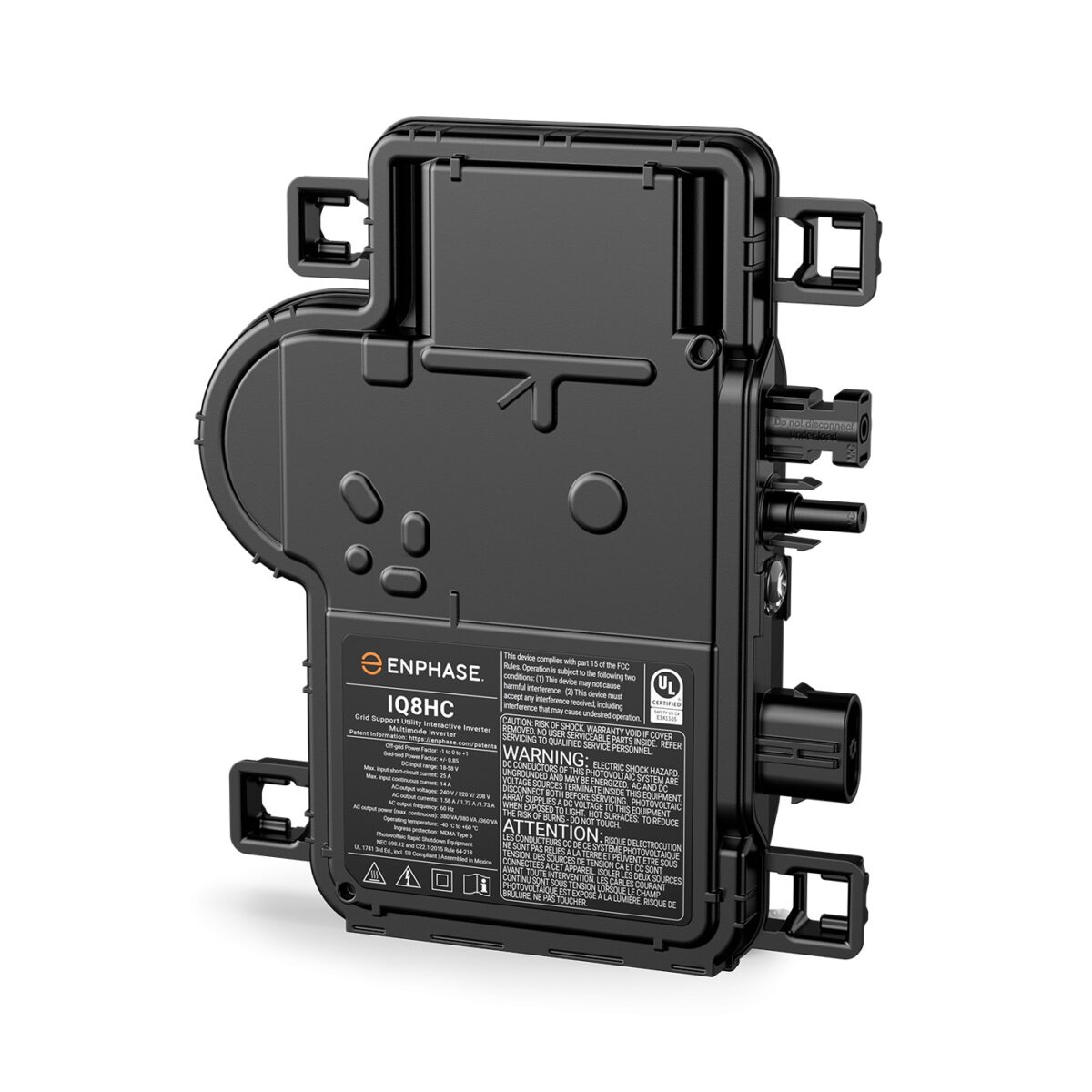Enphase Energy, Inc. has started shipping its new IQ8 Microinverters, IQ8HC and IQ8X in North America. With peak output AC power of 384 W, the new microinverters are designed to pair with a full range of solar modules up to 540 W.
IQ8HC Microinverters can manage a continuous DC current of 14 amperes, supporting higher powered solar modules through increased energy harvesting. The IQ8X Microinverters are available in the U.S. and support solar modules with higher output DC voltage and cell counts, such as 96-cells, 80 half-cut cells and 88 half-cut cells.
The new IQ8 Microinverters build on the previous models’ ability to keep the power running during a grid blackout. The device is designed to react to real-time usage in the home and adjust accordingly. The system will feed as much electricity as it has access to based upon sunlight available and solar power capacity, and it, reportedly, will adjust on the fly. When the house is using more energy than provided by the solar setup, the Enphase system is designed to shut down and to instantly restart when the excess load is removed.
The company offers a 25-year warranty for all IQ8 Microinverters activated in the United States and Canada, and a 12-year warranty for products activated in Mexico.
“Enphase is staying ahead of the industry by developing products that can handle the ever-increasing power density of new solar modules,” said Tom Chentnik, owner of Independent Green Technologies of Texas, an installer of Enphase products.
Enphase Energy Systems in North America reports that the IQ8 Microinverters can also be paired with IQ Batteries for an all-in-one solution. The IQ Combiners consolidate interconnection equipment into a single enclosure and provide a pre-wired solution that includes an IQ Gateway, cell modem, current transformers (CTs), and more.
Enphase has shipped approximately 72 million microinverters, and more than 3.8 million Enphase-based systems have been deployed in over 145 countries. However, in October pv magazine USA reported that Enphase had had a difficult year, with its performance struggling in-line with other residential solar market leaders, which have seen high interest rates, regulatory changes like California’s NEM 3.0, and stabilizing energy prices make a significant dent in rooftop solar installations.
Enphase attributed its pullback in sell-through in California to NEM 3.0. However, at the time, management said it is confident that solar-plus-battery systems will have a payback period under NEM 3.0 that approaches NEM 2.0 levels, and that sales should normalized in “a few more quarters.”
This content is protected by copyright and may not be reused. If you want to cooperate with us and would like to reuse some of our content, please contact: editors@pv-magazine.com.









“October pv magazine USA reported that Enphase had had a difficult year, with its performance struggling in-line with other residential solar market leaders, which have seen high interest rates, regulatory changes like California’s NEM 3.0, and stabilizing energy prices make a significant dent in rooftop solar installations.”
NEM3.0 is a “Train Wreck” for the rooftop solar industry and any product that connect to the grid in states following California’s lead. Utilities pushed NEM3.0 saying that rooftop solar was pushing costs of transmission and distribution of energy onto the poor even though the poor get their electricity at a state mandated discount rate under the CARE program. Enphase Energy new IQ8 Microinverters, IQ8HC and IQ8X in North America only connect to the grid and do not have an off-grid equivalent that could be stand alone to power one’s home off-grid. Being off grid allows homeowners to keep all of their generated energy and use it wherever and whenever they want and not depend on the grid and the utility cuts in value to maintain a viable system. Although the new IQ8 Microinverters build on the previous models’ ability to keep the power running during a grid blackout, they do not market it this way because solar industry rooftop installers only make systems that grid connect. The device is designed to react to real-time usage in the home and adjust accordingly in an off-grid mode and can be joined to a battery system but is not marketed that way, so sales slumped. Battery manufacturers’ have also doubled the prices of their batteries hoping to “Cash In” on California’s NEM3.0 and the IRA tax credits but consumers ae not buying into their overpricing in California or other states.